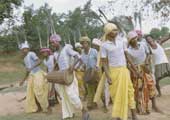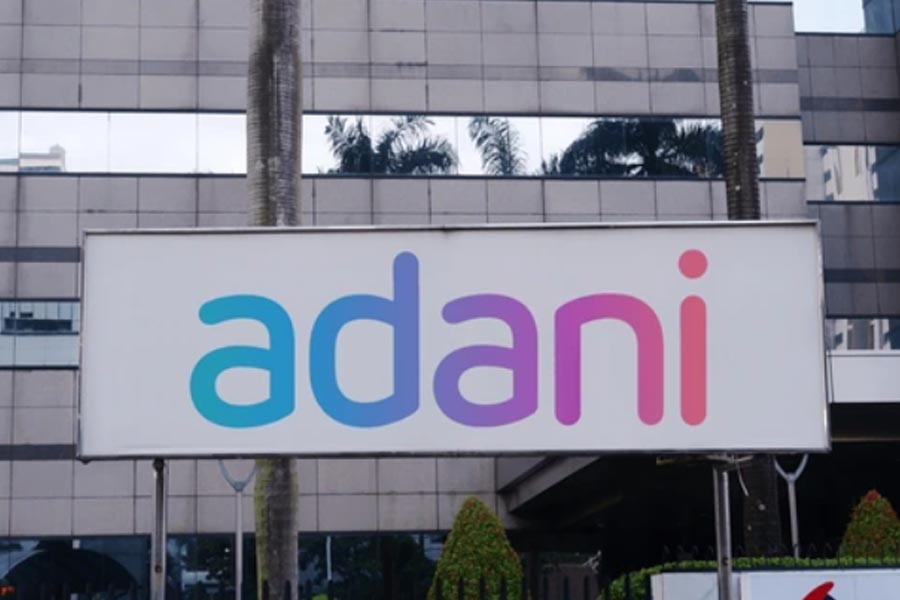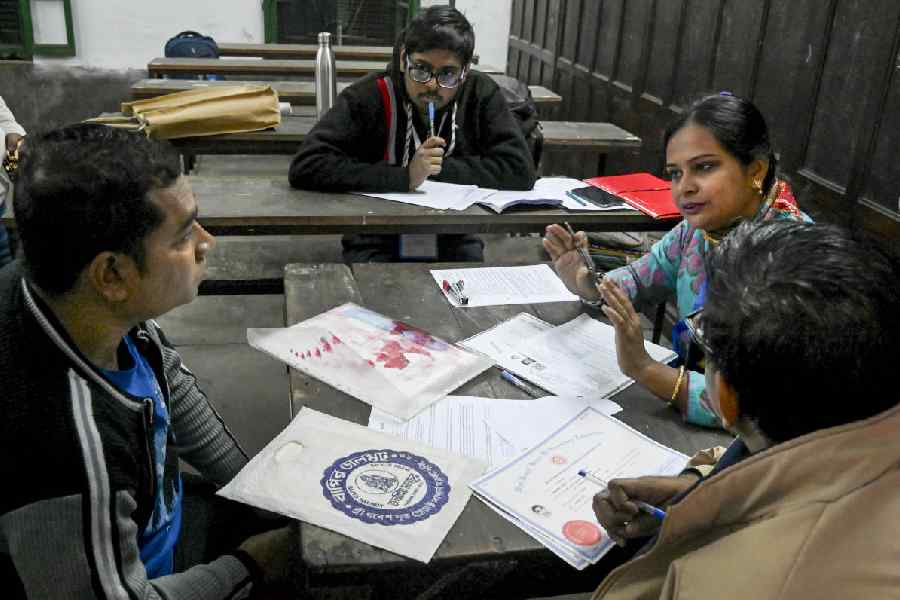 |
For most witnessing a transformation this dramatic would be astonishing. Indeed the way in which Sabar people have moved out of their primitive mode of life to a more contemporary one, astonishes most.
The tribe members had so far led a simpler life in the forests living off the forest produces. They depended mainly on their neighbouring villages for that extra income, which they earned from selling firewood.
But a single visit to Sabarnagar, a rehabilitated settlement for the Sabar community, may change many perceptions. Life, for some 100 families, has witnessed a sea change within a short span of two years with the effort of the indigenous people themselves and those of Bharat Sevashram Sangha.
The Bharat Sevashram Sangha has helped the people to start a new life with farming,vocational training, health-care and a primary school for their children. And all these have been made possible on the 300 bighas of land allotted by the government to Sabars.
Swami Gyanatmananda head of Bharat Sevashram Sangh at Jamshedpur, reveals that it all began with the government?s land allotment. The state also sanctioned a fund for making houses under Birsa Munda Awas Yojna.
'Although agriculture is a new concept in the life of the tribals who previously depended on the forest for food, they have taken it upon themselves to learn irrigation almost as a challenge and has achieved great success,' says Swami Gyantmananda.
The challenge people faced in early days, due to the sloping land and general topography, was that it did not leave much scope for rainwater harvesting.
To facilitate regular supply of water the organisation installed two deep bore wells at Sabarnagar with the help of Central Ground Water Board, New Delhi. Now the available water is used for both household and irrigation purposes.
The Sabars themselves undertook work to make field bunds or mini-dams to conserve moisture and get a better yield of kharif crops such as maize and arhar which are best suited to the climate. organisation members started the concept of micro-irrigation and a process known as ?bucket-drip?.
Furthermore the people have also been provided with proper houses, made possible by the joint financial assistance of the government and the Sangh. Each house that was built were around Rs 85,000.
Apart from the food and shelter, efforts are also underway to boost the level education among the next generation of Sabars.
At least 100 Sabar children were enrolled in the primary school where they were provided with clothes, books and mid-day meal.
'We must admit that it was the concept of the mid day meal that mainly attracted children in the first few months. But now they have developed an interest in education and try to be regular in classes. Some students are very intelligent and if every thing continues as per plan, we would be able to start something that takes care of higher education soon,? informed Swami Gyanatmananda.
?We also have plans to convert this school into a residential one at the earliest. At present however it will be difficult to state the exact time when that may happen as help from all quarters of the society government, people and institutes would be required for this purpose,' he added.
A weaving training centre to provide alternative source of income to the tribal girls have been set up as well. About 30 young tribals especially women are being given training and a daily stipend of Rs 30.
The training includes classes with experts and the finished products ? sarees, dhoti, bed-sheets and towels ?being sold among the locals at a subsidised rate. Some of the products are also sold at stalls of the Sangh at various fairs.
?The final products are of very fine quality and style and therefore in great demand. We are also trying to set up a production centre which will provide employment to trainees and quality products to the customers alike,' Swamiji adds.
The Sangh also has plans of providing health care facilities to the tribals. A team of medical staff headed by a doctor already visits the village thrice every week with necessary medicines.
The villagers gather around the mobile medical-van for check-ups and medicine. Swamiji says 'In case there are serious problems that requires hospitalisation, patients are brought to the city in the van itself and admitted.'
Sanjay Ojha











